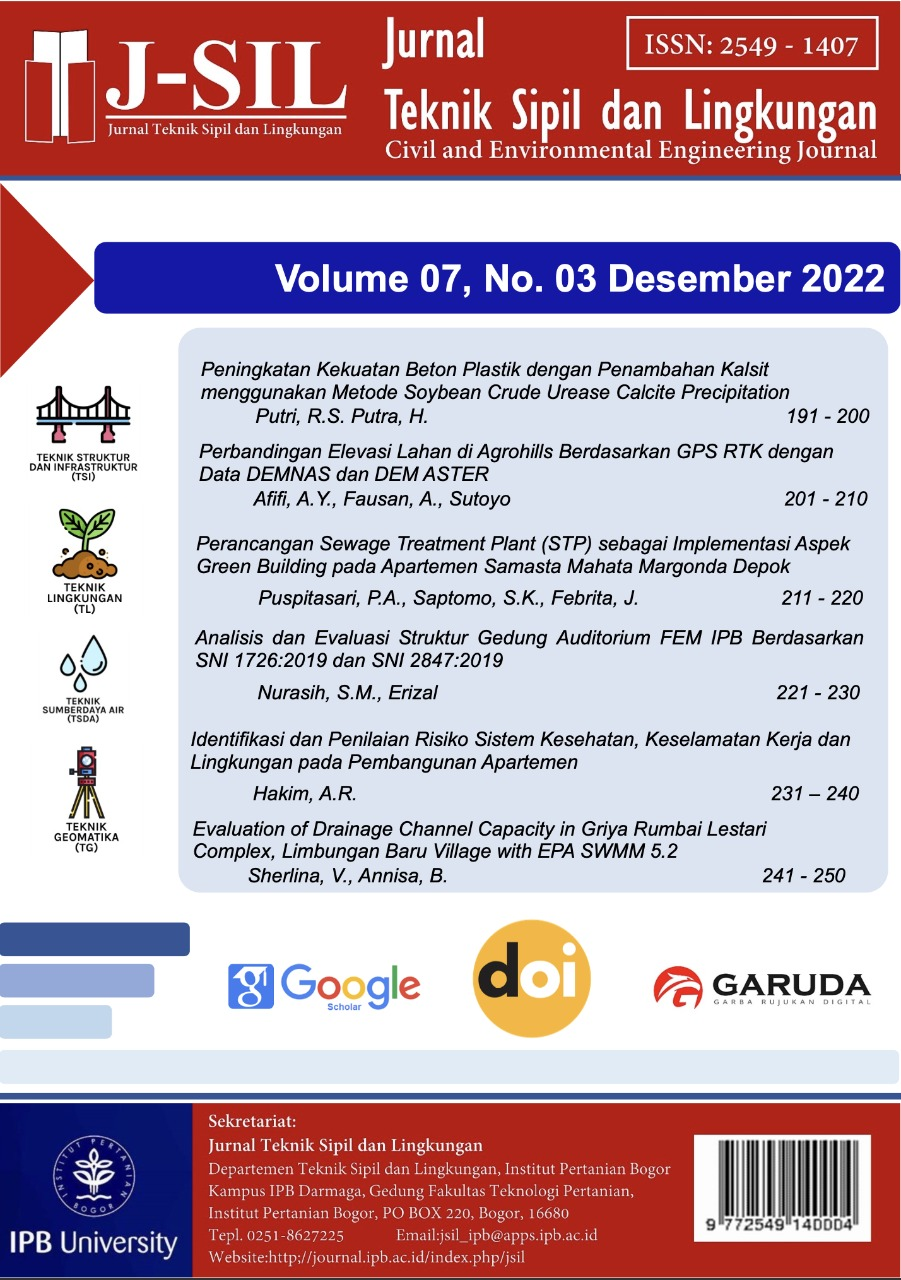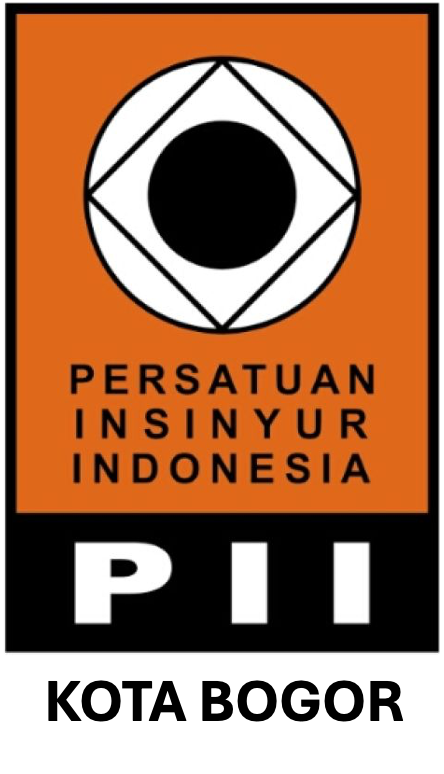Evaluation of Drainage Channel Capacity in Griya Rumbai Lestari Complex, Limbungan Baru Village with EPA SWMM 5.2
Evaluasi Kapasitas Saluran Drainase di Jalan Harapan Kelurahan Limbungan Baru dengan Perangkat EPA SWMM 5.2
Abstract
The high level of land use to meet the population's needs for land for settlement has led to an increase in land cover which results in high rates of rainwater runoff and reduces the amount of water that experiences infiltration. The study was conducted to review the ability of existing drainage channels to accommodate rainwater runoff and provide technical solutions to overflowing canals. The main components used in planning are rainfall to calculate the design discharge, as well as dimensions of existing drainage, soil infiltration rate test, catchment area, percentage of impermeable area, and soil elevation as the main input data in the drainage capacity simulation using the EPA SWMM 5 tool. 2 and results that the drainage is able to accommodate rainwater runoff. However, the simulation also shows that there are flood points due to higher outfall elevations so that the existing drainage is not able to drain rainwater runoff optimally. Based on this, a rainwater harvesting system (PAH) and infiltration wells are planned as an effort to manage and utilize rainwater runoff by collecting and reabsorbing rainwater runoff into the ground.
Downloads
References
Fizein, I., Istijono, B., & Junaidi, A. (2017). Analysis of the Application of Infiltration Wells to Inundation in the Khatib Sulaiman Area, Padang City. In Andalas Civil Engineering (ACE) Conference 2017.
Suprayogi, I. (2016). Mapping of Flood Vulnerable Areas in Pekanbaru City Using Geographic Information Systems. In Proceedings ACES (Annual Civil Engineering Seminar) (Vol. 1, pp. 257-262).
Wardhana, PN, Yuni, SA, & Kurnia, D. (2018). The Effect of Land Cover Changes on Flood Discharge in the Winongo Watershed, Special Region of Yogyakarta. Scientific Journal of Civil Engineering, 22(2), 157-164.
Lewis A. Rossman and Michelle A. Simon. (2022). Storm Water Management Model User's Manual Version 5.2. Washington, DC: Environmental Protection Agency.
Ramadani, P., Juandi, M., & Malik, U. (2020). Mapping of Potential Underground Water Resources in Rumbai Pesisir District Using the Geoelectrical Method of Schlumberger's Rule. Pharmacy, 12(1), 22-26.
Morbidelli, R., Corradini, C., Saltalippi, C., Flammini, A., Dari, J., & Govindaraju, RS 2018 Rainfall infiltration modeling: A review. Waters, 10(12), 1873.
Warsilan, W. (2019). Impact of Land Use Change on Water Absorption Capacity (Case: Kota Samarinda). Journal of Urban and Regional Development, 15(1), 70-82.
US EPA. 2022 Storm Water Management Model User's Manual Version 5.2 (Seattle: Environmental Protection Agency).
Huang, CL, Hsu, NS, Wei, CC, & Luo, WJ (2015). Optimal spatial design of capacity and quantity of rainwater harvesting systems for urban flood mitigation. Water, 7(9), 5173-5202.
Khadka, A., Kokkonen, T., Niemi, TJ, Lähde, E., Sillanp, N., & Koivusalo, H. (2020). Towards a natural water cycle in urban areas: Rainwater management design modelling. Journal of Urban Water, 17(7), 587-597.
Copyright (c) 2022 Jurnal Teknik Sipil dan Lingkungan

This work is licensed under a Creative Commons Attribution-NonCommercial-NoDerivatives 4.0 International License.
Authors who publish with Jurnal Teknik Sipil dan Lingkungan, JSIL agree to the following terms:
a. Authors retain copyright and grant the journal right of first publication with the work simultaneously licensed under a Creative Commons Attribution License that allows others to share the work with an acknowledgment of the work's authorship and initial publication in this journal.
b. Authors are able to enter into separate, additional contractual arrangements for the non-exclusive distribution of the journal's published version of the work (e.g., post it to an institutional repository or publish it in a book), with an acknowledgment of its initial publication in this journal.
c. Authors are permitted and encouraged to post their work online (e.g., in institutional repositories or on their website) prior to and during the submission process, as it can lead to productive exchanges, as well as earlier and greater citation of published work (See The Effect of Open Access).











